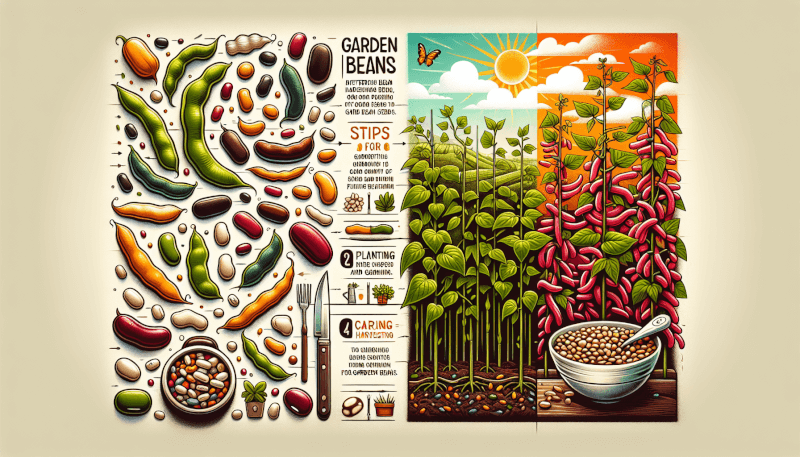Imagine the excitement of growing your own fresh and delicious garden beans right at home. With our high-quality garden bean seeds, you can embark on a journey of cultivating your own thriving bean plants. From the moment you sow these seeds into the rich soil of your garden, you’ll be captivated by the joy and satisfaction that comes with nurturing and watching them grow. With every harvest, you’ll have an abundance of tender and flavorful garden beans to enjoy in your favorite recipes. Get ready to embark on a green thumb adventure with our garden bean seeds, and let nature’s bounty flourish in your very own backyard.
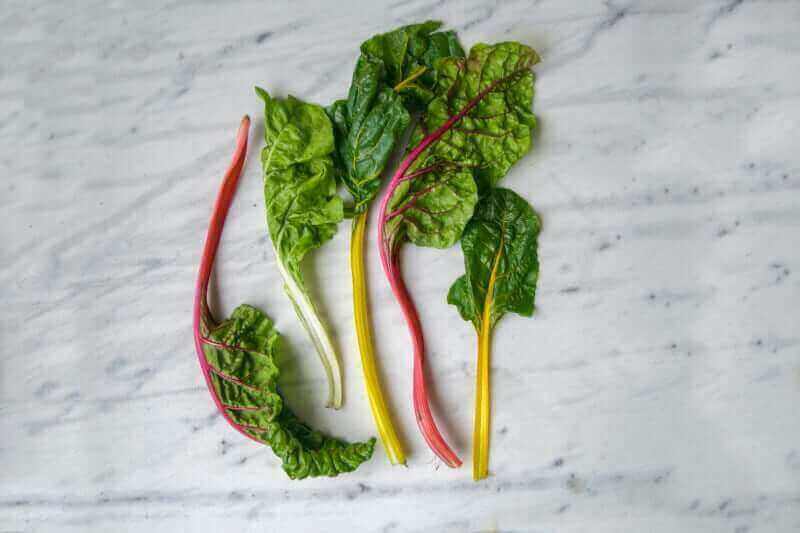
Choosing the Right Garden Bean Seeds
When it comes to selecting garden bean seeds, there are several factors to consider. One important decision is choosing between determinate and indeterminate varieties. Determinate varieties of beans have a compact growth habit and tend to produce all of their beans at once. On the other hand, indeterminate varieties have a vining growth habit and produce beans continuously throughout the growing season. Consider your preferences and gardening goals when making this choice.
Another consideration is whether to grow bush or pole beans. Bush beans are more compact and do not require support, making them suitable for small gardens or container gardening. Pole beans, on the other hand, require trellises or other forms of support as they grow upwards. This choice often depends on the available space and the aesthetic appeal you desire for your garden.
Additionally, it’s important to consider your climate when choosing garden bean seeds. Some varieties are better suited for cooler climates, while others thrive in warmer regions. Take into account the average temperature and the length of your growing season. Opting for bean seeds that are well-suited to your specific climate will increase your chances of success and a bountiful harvest.
Lastly, be sure to look for bean varieties that are disease-resistant. Certain diseases, such as powdery mildew or bacterial blight, can quickly decimate a bean crop. By selecting seeds that have been bred to be resistant to these diseases, you can save yourself a lot of frustration and potentially avoid losing your entire harvest.
Preparing the Soil for Garden Bean Seeds
Before planting your garden bean seeds, it’s crucial to prepare the soil properly to provide an optimal growing environment. Start by clearing the garden bed of any weeds or debris that may interfere with the growth of your beans. Removing these unwanted elements will give your plants the best chance to thrive.
Next, focus on improving the drainage of the soil. Beans prefer well-draining soil, as excessive moisture can lead to rot or other issues. If your soil tends to be heavy or clay-like, consider adding organic matter such as compost or peat moss to lighten it up and improve its drainage capabilities.
It’s also essential to amend the soil with nutrients that beans need for healthy growth. Conduct a soil test to determine the pH level and nutrient content. Adjust the pH if necessary, as beans thrive in slightly acidic soil with a pH between 6.0 and 6.8. Incorporate fertilizer or well-rotted manure to provide the necessary nutrients for vibrant plant growth.
Lastly, adding organic matter to the soil can significantly benefit your garden bean plants. Organic matter enriches the soil, improves its structure, and enhances its moisture-retaining capacity. Compost, leaf mold, or well-rotted manure can be mixed into the soil before planting to boost its fertility and create an ideal environment for your garden bean seeds.
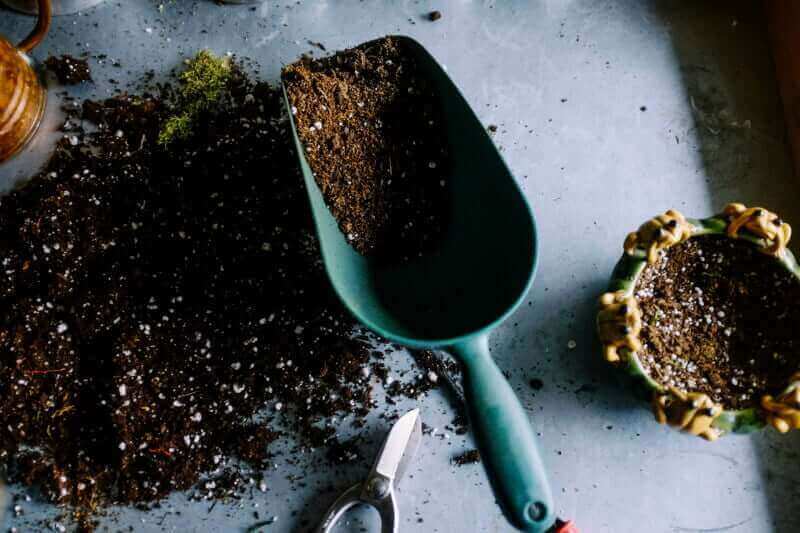
Planting Garden Bean Seeds
Now that you’ve prepared the soil, it’s time to plant your garden bean seeds. It’s important to decide on the planting method that best suits your needs and growing conditions.
If you opt for direct sowing, dig planting holes that are approximately 1 inch deep and 2-3 inches apart. This spacing allows the plants to have enough room to grow and ensures adequate air circulation. Place a few seeds in each hole and cover them with soil, gently firming it down.
Alternatively, you can start your bean seeds indoors and transplant them into the garden when weather conditions permit. This method gives you more control over the germination process and allows for an earlier start to the growing season.
Regardless of the planting method you choose, make sure to water the seeds immediately after planting. This provides the moisture they need to germinate and establish themselves in the soil. Be careful not to overwater, as excessively damp conditions can lead to rot or other issues.
Caring for Garden Bean Plants
Once your garden bean plants have sprouted, it’s important to provide them with care to ensure healthy growth and a bountiful harvest. For pole beans, it’s crucial to provide support for their vining growth habit. Install trellises, bamboo stakes, or other structures that will help the plants climb. This prevents the beans from sprawling on the ground and reduces the risk of disease or pest infestation.
Mulching around the base of your bean plants is another essential step in their care. Mulch helps to conserve moisture in the soil by reducing evaporation, which is important for beans as they require consistent moisture. Mulch also suppresses weeds, which helps to prevent competition for nutrients and water.
Regular watering is crucial for the health and productivity of your garden bean plants. Beans prefer evenly moist soil, so aim to water them at least once a week or as needed to prevent the soil from drying out. Water deeply, ensuring that the moisture reaches the root zone. Avoid overhead watering, as wet foliage can promote the spread of diseases.
Fertilizing your garden bean plants is another important aspect of their care. These plants are heavy feeders and benefit from regular fertilization. Use a balanced fertilizer or incorporate well-composted manure into the soil when planting. Additionally, side-dress the plants with a nitrogen-rich fertilizer once they start producing beans to promote continued growth and productivity.
Controlling pests and diseases is a key concern for gardeners. Common pests that can affect bean plants include aphids and bean beetles. Monitor your plants regularly for any signs of pest infestation and employ appropriate pest control measures if needed. Diseases such as powdery mildew or bacterial blight can also pose a threat to your bean crop. Opt for disease-resistant varieties and practice good garden hygiene to minimize the risk of these issues.
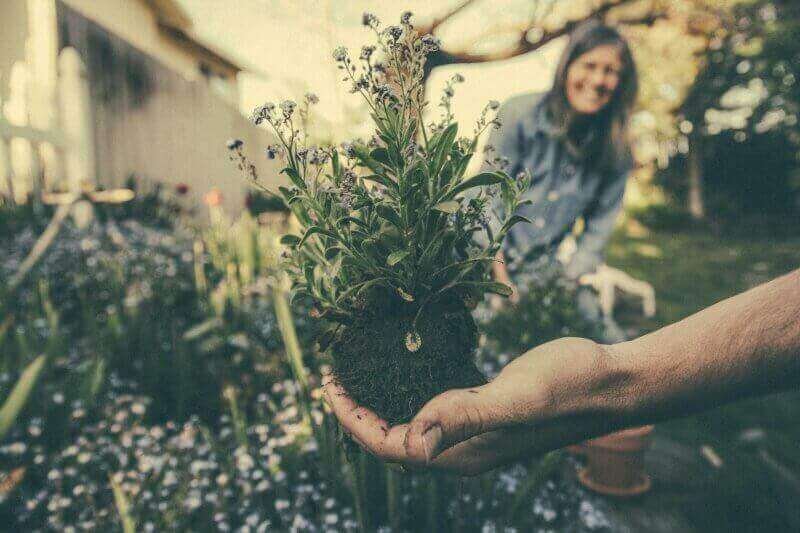
Harvesting Garden Bean Seeds
As your bean plants reach maturity, it’s time to harvest the beans. Determining the right time to harvest depends on the variety you’re growing and your personal preferences. Generally, beans are ready to harvest when the pods are still tender and crisp. Harvesting regularly promotes continued production, so keep an eye on your plants and pick the beans as soon as they reach the desired stage.
To harvest the beans, gently pull the pods from the plants, taking care not to damage the plant or surrounding foliage. Use both hands to hold the stem of the pod and apply gentle pressure until it snaps free from the plant. Harvesting regularly not only encourages more bean production but also reduces the risk of pods becoming tough or overripe.
If you wish to save seeds from your garden beans for next year’s garden, select the healthiest and most robust pods. Allow these pods to fully mature and dry on the plants. Once they have turned brown and are crisp to the touch, remove the seeds from the pods and store them in a cool, dry place for use in the following growing season.
When storing your harvested beans for immediate consumption, keep them in a cool, dry place to maintain their freshness. Do not wash the beans until you are ready to use them, as moisture can lead to spoilage. With proper storage, your harvested beans can be enjoyed for several weeks.
Troubleshooting Common Problems with Garden Bean Seeds
While growing garden beans can be a rewarding experience, it’s not without its challenges. Here are some common problems you may encounter and some possible solutions:
If you’re experiencing inadequate germination, ensure that the soil temperature is suitable and provide consistent moisture throughout the germination period. Pre-soaking the seeds can also improve germination rates.
Poor growth or yellowing leaves may indicate a nutrient deficiency. Conduct a soil test to determine which nutrients may be lacking and address them through appropriate fertilization.
Pests such as aphids or bean beetles can be controlled through various methods such as handpicking, introducing beneficial insects, or using organic pest control products. Monitor your plants regularly and intervene as soon as you notice pest activity.
Diseases like powdery mildew or bacterial blight can be prevented by selecting disease-resistant varieties and practicing good garden hygiene. Ensuring proper air circulation and avoiding overhead watering can also help to minimize the risk of diseases.
Weed competition can hinder the growth of your garden bean plants. Regular weeding and the use of mulch can help suppress weeds and ensure your beans have the best chance to thrive.
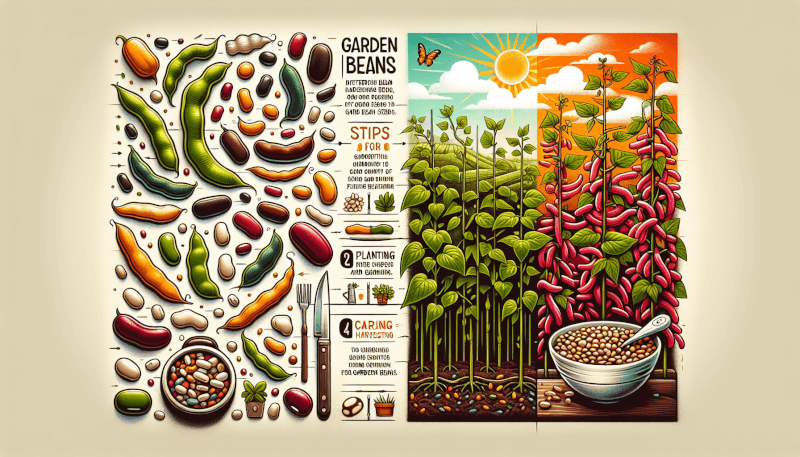
Growing Garden Bean Seeds in Containers
If space is limited or you prefer to grow your beans in containers, it is entirely possible to do so. Here are some steps to get you started:
When choosing a container, opt for one that is large enough to accommodate the root system of your chosen bean variety. A container with a minimum diameter of 12 inches and a depth of 8-10 inches should suffice. Additionally, ensure that the container has drainage holes to prevent waterlogging.
Select bean varieties that are well-suited to container gardening. Bush beans tend to be a better choice than pole beans due to their more compact growth habit. Look for varieties that are labeled as suitable for container cultivation.
Before planting, prepare the container by filling it with a well-draining potting mix. This ensures that the roots have access to the necessary nutrients and proper moisture levels. Avoid using garden soil, as it may be too heavy and lack the necessary structure for container gardening.
Plant the bean seeds according to the instructions provided for the chosen variety. Ensure that the container receives adequate sunlight, typically at least six hours per day, as beans require full sun to thrive. Water regularly and maintain proper moisture levels to keep your container-grown beans healthy.
Extending the Garden Bean Growing Season
To extend the garden bean growing season and enjoy fresh beans for a longer period, consider the following strategies:
Starting your seeds indoors is an excellent way to give your beans a head start and lengthen the growing season. Sow the seeds in pots or trays a few weeks before the last expected frost date in your area. Once the seedlings have developed true leaves and all risk of frost has passed, transplant them into the garden.
Using season extenders such as row covers or cold frames can protect your bean plants from early spring or late fall frosts. These structures capture and retain heat, creating a microclimate that allows for the extended growth of your beans. Be sure to remove the covers or frames during periods of warm weather to prevent overheating.
Succession planting is another technique that enables continuous harvests of beans throughout the growing season. Instead of planting all your seeds at once, sow a new batch every two to three weeks. This staggered planting ensures a continuous supply of fresh beans over an extended period.
Choosing heat-tolerant bean varieties is especially important if you live in a region with hot summers. Look for varieties that have been specifically bred to withstand high temperatures. These varieties will fare better in the heat and continue to produce beans even during the hottest days of summer.
Providing adequate water and shade is crucial during the growing season, particularly in hot climates. Beans require consistent moisture, so be diligent about watering regularly. Additionally, consider providing partial shade to protect the plants from intense afternoon sun, which can stress or damage them.
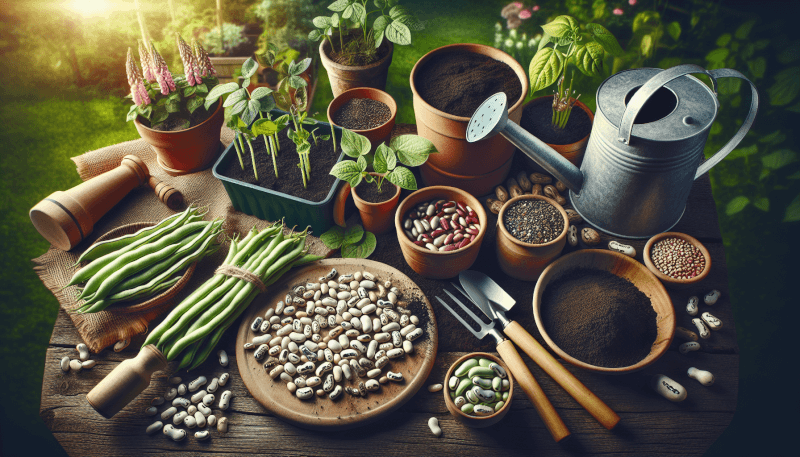
Different Ways to Enjoy Garden Beans
Once you’ve successfully grown your garden beans, there are numerous delicious ways to enjoy them in your meals. Here are just a few ideas:
Steamed or boiled beans make a simple and nutritious side dish. Season with a sprinkle of salt and enjoy them as a healthy accompaniment to your main course.
Roasted beans are a flavorful and crunchy option. Toss them with olive oil, salt, and any additional seasonings you prefer. Spread them evenly on a baking sheet and roast them in a preheated oven until they are tender and slightly browned.
Stir-fried beans with garlic, ginger, and soy sauce create a tasty Asian-inspired dish. Quickly cook the beans in a hot pan with a small amount of oil until they are crisp-tender. Add the seasonings and stir-fry for a few more minutes before serving.
Adding beans to soups or stews provides an extra dose of protein and fiber. They can be a hearty addition to vegetable soups, chili, or even a traditional minestrone.
In cold salads, beans provide texture and substance. Combine them with other vegetables, such as tomatoes, cucumbers, and peppers, and dress with a vinaigrette for a refreshing and nutritious side dish.
Conclusion
Growing garden beans from seeds can be a rewarding and enjoyable experience. By choosing the right seeds, preparing the soil properly, and providing adequate care, you can have a successful harvest of fresh and delicious beans. Whether you plant them in your garden or in containers, follow the tips and techniques outlined in this article to grow thriving bean plants. With a little effort and attention, you can enjoy the bounty of your garden and savor the flavors of homegrown beans in a variety of dishes. Happy gardening and bon appétit!

